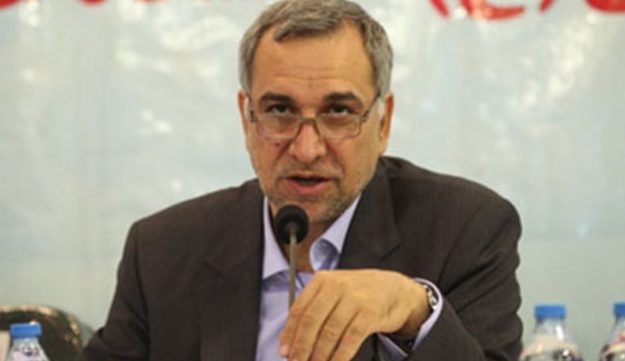February 18, 2022
 The coronavirus epidemic has resumed with a vengeance, with the daily volume of new cases reported, which was generally below 2,000 from mid-December to mid-January, passing 10,000 a day in late January and 30,000 at the start of February.
The coronavirus epidemic has resumed with a vengeance, with the daily volume of new cases reported, which was generally below 2,000 from mid-December to mid-January, passing 10,000 a day in late January and 30,000 at the start of February.
The Health Ministry said it expected the latest surge to peak the first week of March and for infections then to decline swiftly.
The daily total reached 39,819 on February 7. That was around the same as the peak last summer, during the last surge. (The record high was 50,228 on August 17 of last year, but that was a single day anomaly; the daily highs were around 39,000 in the weeks before and after that anomalous high.)
But since the February 7 high, the daily count has quickly fallen into the 20,000 range and even down to 12,058 on February 19. This may mean the surge of the omicron variant was just a brief one unlike the previous surges. However, the Health Ministry says it expects the latest surge to peak around 100,000 in the first week of March.
As with most countries around the world, the Islamic Republic has been reluctant to impose more lockdowns, recognizing that the public has “lockdown fatigue.” The government asks the public to observe coronavirus protocols, but there is little evidence that the authorities are enforcing them.

Health Minister Bahram Eyenollahi said February 2 that the Covid-19 Taskforce has refused to approve many of the recommendations made to it by the Health Ministry.
The government continues to urge the public to get vaccinated, but that is about the sum of the campaign. Supreme Leader Ali Khamenehi was photographed this month getting his booster shot. But it was revealed about the same time that First Vice President Mohammad Mokhber has not yet received even one shot, indicating that the man who runs the government on a day-to-day basis is not exactly on board with the vaccination campaign.
President Raisi found his own government lax in other ways. He directed on February 12 that government agencies stop holding meetings and ceremonies unless they were absolutely necessary. But he issued that order only after all the ceremonies for the anniversary of the revolution had been completed the day before. And he specifically rejected calls for a nationwide shutdown that day.
The Majlis suspended its sessions for two days January 31 after 47 of the 290 deputies or 16 percent reported they had tested positive for the coronavirus.
Health officials say the bulk of the new cases are the Omicron variant and that young children have been the group most impacted. The government responded by closing kindergartens for two weeks in counties with red ratings now covering three-fourths of the counties as of February 12. But it is not publicly broaching the idea of closing schools. As in many other countries, including the United States, the authorities seem to detect a similar reluctance to shut down in-person teaching. Vaccinations for children aged 5-to-11 were only authorized January 22, so few kindergarteners have yet been vaccinated but that also holds true for all elementary grades. Tehran province, however, closed all elementary schools for one week.
Meanwhile, Deputy Health Minister Younes Panahi said February 18 that the epidemic has dealt “more damage” to Iran than then entire eight years of war with Iraq in the 1980s. However, he failed to say what he meant by “damage.” Did he mean deaths or economic setbacks or something else? In terms of deaths, the coronavirus total is now 135,000 over two years or about half as many as the war deaths over eight years.
In terms of deaths per million population, the epidemic has hit Eastern Europe worst, followed by Latin America though both the United States (18th) and Russia (31st) have suffered badly as well. Iran ranks 63rd which is not bad globally, but is the worst in all of Asia. Lebanon ranks next in Asia in 70th place.
Germany cited Iran as a high-risk country for coronavirus on February 13, meaning any visitors from Iran have to show proof of vaccination or of recovery before being allowed into Germany.
As one of the accompanying charts shows, Iranians have slowed down getting their first vaccination, although those with two shots have been rapidly getting boosters. The problem is not a lack of vaccine. As of February 19, the Health Ministry reported having administered a total of 139 million shots first, second and booster. But the Customs Administration announced January 26 that it had cleared imports of 156 million doses, so there are still 17 million imported shots available and that doesn’t count locally-made vaccines, for which the numbers are very unclear.
Critics of the regime have long accused it of covering up the actual extent of the epidemic. But globally, health officials all acknowledge that they are not able to count everyone with the disease. All published counts by all countries, including the US, are undercounts. Iran’s Health Ministry has also acknowledged that, without announcing how large they think the undercount is. On February 1, however, Ebrahim Ghaderi, chief of patient care at the Health Ministry’s Center for Infectious Disease Management, finally put some numbers out. He said he estimates the actual number of coronavirus cases each day now is five times higher than the daily announcements. That puts the scope of the epidemic much higher than even critics of the regime have estimated.
Ghaderi said the unreported cases are much greater now than earlier in the epidemic because the Omicron variant is much milder. He said, “Seventy or 80 percent of patients have only mild symptoms and some do not even go to a doctor.”
As the Iran Times reported in an earlier issue, the government announced that it had ordered a halt to vaccine imports because Iran was now able to produce all its needs. On January 3, however, the taskforce overseeing the response to the epidemic said there is no such ban. The Customs Administration has continued to announce the arrival of imported vaccines ever since the “ban” was announced, but at a much lower level of deliveries than before. About 88 percent of the imports have been of the Chinese vaccine Sinopharm.
Health Minister Eyenollahi has come under sharp criticism since he announced early in January that he had been vaccinated with an Iranian-made vaccine. A week later, a photo of his vaccination certificate was posted on social media and it showed Eyenollahi received the Russian vaccine Sputnik V, not an Iranian-made dose as he claimed. The Health Ministry said its boss got both Iranian and Russian vaccines and attributed the publication of the certificate, which it did not deny was real, to “a targeted foreign media campaign meant to tarnish public trust.”
An interesting footnote: Iran is doing better at vaccinations than the United States. According to the figures posted daily by Johns Hopkins University, as of February 18, 66.3 percent of Iran’s population was fully vaccinated, meaning that proportion had received at least two shots. For the United States, the equivalent figure was 65.4 percent.
The highest vaccination rate in the world, by far, was the United Arab Emirates with 96.5 percent fully vaccinated.






















